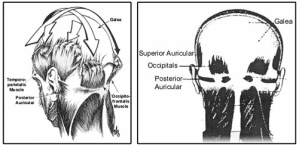It amazes me that a simple repositioning of your tongue can have such a profound effect on the body and mind. I’ve already covered a lot of the effects Khechari mudra has on the mind in previous posts, so in this post I’m going to share with you the effects of khechari mudra on the body’s posture and tell you why those effects are important.
When the tongue is curled back in the mouth and stretched up towards the uvula, and beyond into the nasopharyngeal cavity, a number of muscles are engaged. As these muscles contract they generate a cascade of subtle adjustments within the body.
- The jaw moves back.
- The sternum pulls up, to slightly concave the chest.
- The thyroid gland also pulls upward (and is stimulated into activity).
- The head rotates ever so slightly forward and the spine elongates and aligns. This also causes the pelvis to rotate forward and the knees to bend slightly.
- The scapula rotate forward.
So what makes all of these postural effects so interesting? To keep it simple, the body opens up and relaxes, becomes powerful in its movements and gains poise, hormones become balanced and the mind settles. There’s a definite strengthening of the connection between mind and body, which leads to enhanced balance and refined mind body coordination.
Another interesting effect of these muscular contractions is a bit more esoteric. As these muscles contract they pull on and tighten the Galea (the tendinous cap that covers the skull). This tightening of the galea brings the practitioner’s attention and energy up to the top of his head (AKA: crown chakra) allowing him to open the energy centre in the crown centre. Yogis achieve a similar effect by tying their hair up into a knot on top of their head (Rishi knot).
There’s quite a bit more to discuss on this, but time isn’t something I have a lot of right now so I’ll leave you with those main points to think about and maybe take a closer look at the specifics in other posts.




Nice explanation..
i can feel the pull in all the mentioned muscles in khechri mudra however unable to feel any bliss. I do 20 min. of Khechri + Sambhavi two times a day.